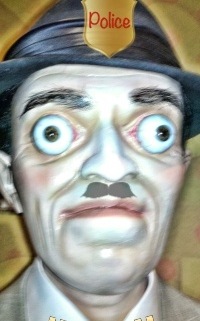We’ve all read books where the characters within are basically clones of those we’ve seen in other books, with the only difference being a name change. This is often frustrating for readers who want to believe the world you’ve created. They know that in the real world people have minds of their own. They do things and think about things that affect their lives. They make mistakes. There’s conflict in their lives. And things occasionally go as planned or wished.
Every single person on this planet has some characteristic that’s different from other people; therefore, it’s imperative that writers develop and show those differences among the fictional folks in their made-up tales.
To get these details right involves careful planning, especially when writing about people and professions that are unfamiliar to us. In advance of writing the first word, it’s a good idea to create a file, a place to store important details about your future fictional person (or setting). I know, this is writing 101 but I am heading somewhere with this, I promise.
Creating Cop Characters
Law enforcement officers and their traits are a bit different than the average person. Therefore, creating a special file could be a lifesaver, if realism is the goal, and it should be if you want your readers to become emotionally invested in the characters you create. After all, caring for a character could certainly keep those pages turning.
Keep Your Eyes on the Cop
Cop are a bit set apart from the rest of the population because their daily lives are far different from the day-to-day activities of most people. Why so? Because their daily routines include seeing and dealing with the extreme bad sides of people, and they do so on a regular basis, day-in and day-out, unlike most of us who rarely encounter people who beat on us and sometimes want to kill us.
Dealing with the worst that life has to offer—extreme violence and the lowest of the lowest human behaviors—causes cops to act and react differently to many scenarios than would the average Jane and Joe. For example, and you’ve all heard this before, when gunfire sounds, most people start running as fast as they can in the opposite direction. But not police officers. Instead, their instinct is to move as fast as they can toward the source of the danger.
Watch for the Little Things They Do
Since cops see so much bad stuff and know the dangers associated with it, and how quickly something could go south, they’re always on the alert, even when in the safest of situations.
Even while seated in church, for instance, a cop glances about, scanning the congregation, looking for the nearest exit in case a gunman pops up and begins shooting. The on- or off-duty officer wants to know where to have people leave the sanctuary while he battles the shooter. This is going through the officer’s mind at the time he selected a seat near an outside wall to allow views of all entrances and exits, and to provide the tactical advantage of not offering a chance for a rear track/ambush.
The same is true when dining in restaurants, going to movie theaters, and even while grocery shopping. Eyes are forever darting from one person to another. Is that bulge beneath the baggy t-shirt on the guy’s side a concealed firearm? The woman carrying a crying baby. She’s wearing a ton of makeup around her right eye. Is she hiding a bruise? She’s obviously with the man wearing the Black Sabbath t-shirt, the guy pushing the cart containing several cases of cheap beer. Did he get drunk and punch the woman?
Sitting with their backs to the wall? That’s to watch the doors, the crowd, and to prevent a surprise attack from behind.
There’s a specific meaning and purpose as to why cops stand as they do, and it’s a trait that should appear in your stories. Such …
The Interview Stance
Officers are taught early on that when speaking with someone, especially in the instances where they’re faced with the unknown, that they should stand with their gun side away from the person—body bladed 45 degrees to the suspect, feet shoulder width apart (also at a 45 degree angle to the suspect). In the ideal situation, their body is facing slightly toward the suspects non-dominate side (this typically becomes apparent by hand gestures, smoking cigarettes, etc.).
The leg on the non gun-hand side should be slightly forward. The other slightly to the rear. Body weight is distributed equally on the balls of the feet. The front leg is then in position to strike or deflect attack.
Standing toward the non dominate side also enable the officer to gain quick control for applying a joint lock or pain compliance tactic, if needed. Controlling the non-dominate side allows the officer to add distance between him/her and the suspect’s strong side.
Their hands should be above the gun belt, appearing in a non-threatening, non-fighting position.
A cop’s gun hand should be poised, ready to draw either a firearm or TASER, whichever the situation dictates, while the other hand is ready to deflect incoming blows or to carry out other defensive actions, such as reaching for pepper spray, etc.
They should stand in this “ready position” in the event a situation turns violent.
All this while appearing at ease (yeah, right!).
Officers typically have their hands open when speaking with people, not clenched like they’re ready for a physical confrontation. This sends a nonverbal signal of “I’m not a threat to you.” Sometimes it’s the little things that prevent conflict.
This, my friends, is the tip of the iceberg. There are many tiny details that could make your cop tales zing with realism and excitement and fun, and it’s those details that bring fans back to your books time and time again.


